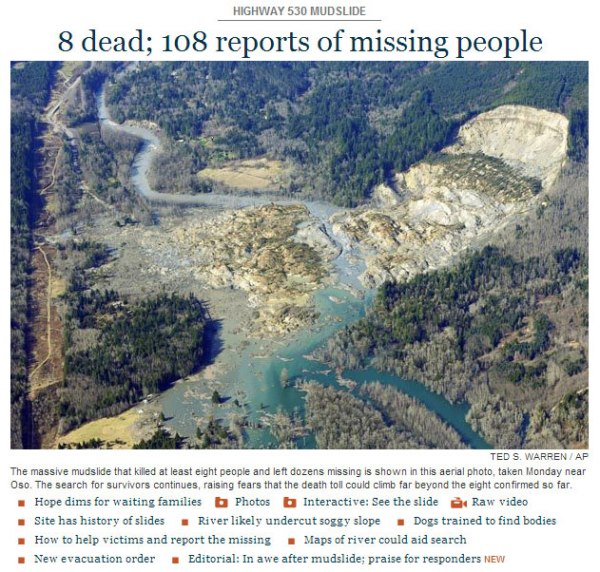Breaking news coverage: Oso mudslide

I was the only producer in the building on Saturday, March 22, when I saw tweets from a PIO with the sheriff’s office that there was a house in the road after a mudslide near Darrington. I worked with a metro editor to assess the scale of the slide, updating our social media accounts and the homepage as we got information. I realized this was by far the biggest story I’d worked on, at the Times or elsewhere.
The next two weeks were a blur. The digital team worked long, harried hours keeping the website updated with the work produced by more than 30 reporters and countless editors and managers. We had watchdog stories running within days of the slide. We built a hugely popular before-and-after interactive that was the centerpiece on SeattleTimes.com for the better part of a day. We put together a page memorializing victims of the slide. We had too many daily stories and blog posts to count, tracking updates as search efforts continued.
Thirty-one reporters contributed to a narrative of the events that day, a story with a custom layout I hand coded late one night. We used social media to tell readers what we knew and how to get help. We lowered our paywall on resources for victims of the mudslide. (Read editor Kathy Best’s thoughts on that in this Poynter piece.)
It was exhausting in many ways, but it’s impossible to work on a story like this and not see the significance journalism has.